#Battle of Gettysburg
Explore tagged Tumblr posts
Video
youtube
A fine little summary of the Gettysburg campaign, the interpersonal relations that ruined Lee’s command, and a good dispelling of the “they were just looking for shoes” myth.
27 notes
·
View notes
Text
On July 2, 1863, Colonel Joshua Chamberlain lead his men of the 20th Maine on a bayonet charge down the slopes of little round top, during the battle of Gettysburg. He would later be awarded the Medal of Honor for his actions that day.
This clip, from the movie Gettysburg, depicts the epic moment in history. It's one of the best, if not the best scene in the movie.
#gettysburg#battle of gettysburg#movies#video#civil war#army of the patomac#confederate army#little round top#joshua chamberlain#military#history#jeff daniels
697 notes
·
View notes
Text
Battle of Gettysburg remembered, 160 years later
Saturday 7/1 marks the 160th anniversary of the Battle of Gettysburg. This decisive engagement provided a devastating loss to Confederate forces outside of Harrisburg, PA and became a turning point in the war.
We remember the more than 7,000 dead and 44,000 injured from both sides of the conflict on that day.
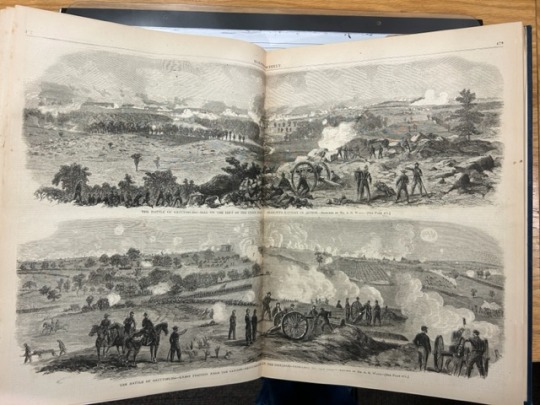
A.R. Waud sketched "The Battle of Gettysburg: Hill on the Left of the Union Post" and "Union Position Near the Centre" for the July 25, 1863 edition of Harper's Weekly. This item is preserved among the History Center's historic newspaper collections.
10 notes
·
View notes
Text

Confederate and Union soldiers shaking hands at a Battle of Gettysburg reunion 1913.
The 1913 Gettysburg reunion was a Gettysburg Battlefield encampment of American Civil War veterans for the Battle of Gettysburg's 50th anniversary. The June 29 – July 4 gathering of 53,407 veterans (about 8,750 Confederate) was the largest Civil War veteran reunion. All honorably-discharged veterans in the Grand Army of the Republic and the United Confederate Veterans were invited, and veterans from 46 of the 48 states attended (all except Nevada and Wyoming).
#06/29#1913#america#civil war#reunion#50th anniversary#veterans#gettysburg#union#confederate#soliders#reddit#utterlyuniquephotos#dannydutch1#battle of gettysburg#pennsylvania#pa#north#south#1863#photography#b&w#veterans day#armed forces#history#military#memorial day
72 notes
·
View notes
Text
#OTD in 1863 – The Irish Brigade at Gettysburg – Pickett's Charge, Day 3 | Pickett's Charge had begun and the 69th Pennsylvania would suffer dreadful losses.
On 3 July 1863, as the Confederates of George Pickett’s Division closed on the stone wall near the top of Cemetery Ridge at Gettysburg, they saw a green flag rising up from behind it surrounded by 200 men in blue springing to their feet to open fire on the charging Confederates. The green battle flag was emblazoned with the number “69” but this was not New York’s Fighting 69th, it was the 69th…
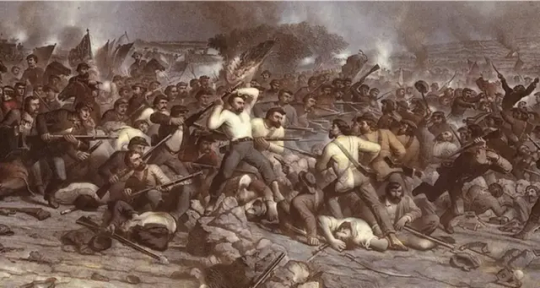
View On WordPress
#American Civil War#Battle of Gettysburg#History#History of Ireland#Ireland#Irish Brigade#Irish History#Today in Irish History#United States
21 notes
·
View notes
Photo

Today in 1863, a 34-year-old college professor from Maine named Joshua Lawrence Chamberlain helps fend off repeated Confederate attacks against the left flank of the Union line at Gettysburg. The fight for Little Round Top will become one of the battle's most celebrated moments.
https://twitter.com/MilHistNow
63 notes
·
View notes
Photo

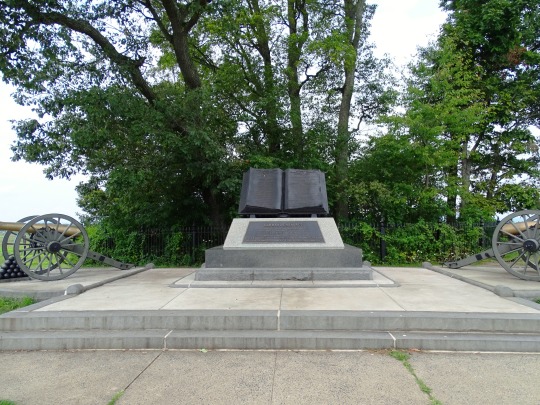
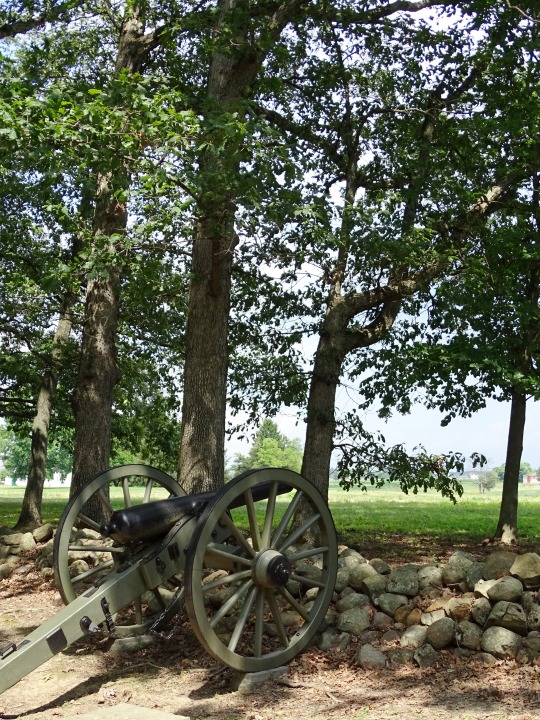


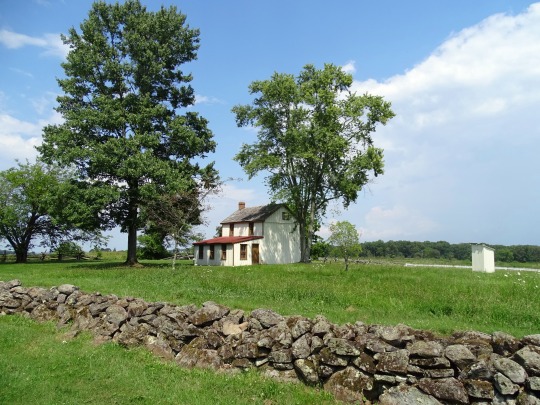




American Civil War: The final day of the Battle of Gettysburg culminated with Pickett's Charge on July 3, 1863.
#High Water Mark of the Rebellion Monument#final day#Battle of Gettysburg#USA#3 July 1863#Gettysburg National Military Park#Pennsylvania#travel#Gettysburg National Battlefield#Gettysburg Battlefield Historic District#vacation#original photography#American Civil War#US Civil War#US history#anniversary#West Confederate Avenue#John B. Bachelder#Cemetery Hill#Little Round Top#Phillip Snyder farm#Plum Run Valley#Devil's Den#nature#tree#woods
17 notes
·
View notes
Photo
Battle of Gettysburg day three.

Today in History: July 3rd 1863, the last day of Gettysburg.
Confederate General Robert E Lee’s has a last attempt at breaking the Union line and it ends in a disastrous failure.
This third day of Gettysburg, Lee, having failed on the right and the left, planned an assault Meade’s center. 15,000 men under General George Pickett was organized, and Lee ordered a massive bombardment of the Union positions. As Pickett’s force attempted to cross the mile distance to Cemetery Ridge, Union artillery blew great holes in their lines. Yankee infantry flanked them and cut down the Confederates. Only a few hundred reached the Union line, and within minutes they all were dead, dying, or captured. In less than an hour, more than 7,000 Confederate troops had been killed or wounded.
It wasn’t until the night of July 4, when Lee withdrew.
309 notes
·
View notes
Text

Gettysburg (Avalon Hill, 1958) is considered the first wargame to depict an historic battle. It was released in advance of the centennial of the bloodiest engagement of the American Civil War, fought July 1-3, 1863. Designer Charles S. Roberts acknowledged the game had some flawed mechanics and balance issues due to a lack of playtesting but it remained in print for many years, with a 2nd edition in 1961, a 3rd ed in 1964, and later printings through the 1970s and 80s. Attempts to fix the movement rules resulted in different editions of the game switching back and forth between a square grid and hexes on the board.
Suggested improvements to the game included those offered in The General V1 N5, January 1965, by Staff Sergeant Lou Zocchi (later a published game designer himself and the founder of dice company Gamescience):

#Gettysburg#Avalon Hill#board game#wargame#Charles S Roberts#Lou Zocchi#The General#ACW#historical wargaming#American Civil War#US history#gaming history#Battle of Gettysburg#The Battle of Gettysburg
64 notes
·
View notes
Text
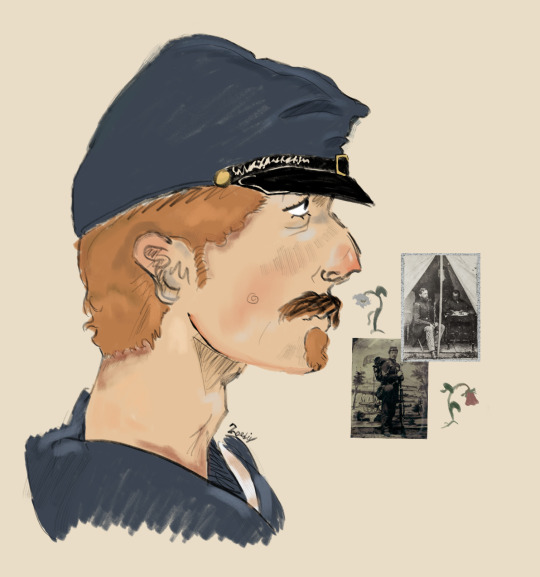
Happy (or unhappy because 51,112 people were wounded, killed, or missing.) 162nd anniversary of The Battle Of Gettysburg.
#artists on tumblr#art#digital artist#digital art#artwork#original art#american civil war#civil war#history#battle of gettysburg
3 notes
·
View notes
Text
youtube
« Donald Trump is the first former US president to be tried for paying hush money to an adult film star who said his penis is shaped like a mushroom. » —Jimmy Kimmel
Jimmy Kimmel on Monday also had a few words about Trump falling asleep in court.
But the best part of this segment was his focus on Trump's rally in Pennsylvania last Saturday.
After watching that, I think that nobody this year should be granted a high school diploma without first transcribing 5 minutes of Trump speaking at a rally. New voters need to experience Trump's total incoherence in a concrete way.
BTW: While I miss the Midwest, one thing that makes me happy to be in New York right now is this...
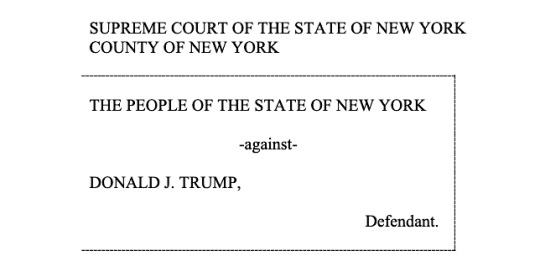
That's the top of Page 1 of the 34 count indictment against Trump in the hush money case. It's a great feeling to be one of the "People of the State of New York" in whose name this prosecution was brought about. Eat your heart out, Colorado!
#jimmy kimmel#donald trump#dozy donny#trump falls asleep in court#hush money#toad#stormy daniels#trump's incoherence#battle of gettysburg#trump rally in shnecksville#election 2024#vote blue no matter who#Youtube
22 notes
·
View notes
Photo

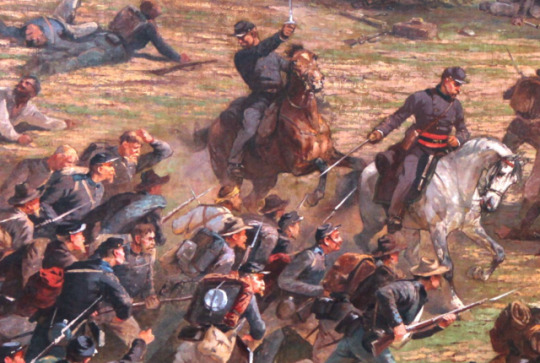
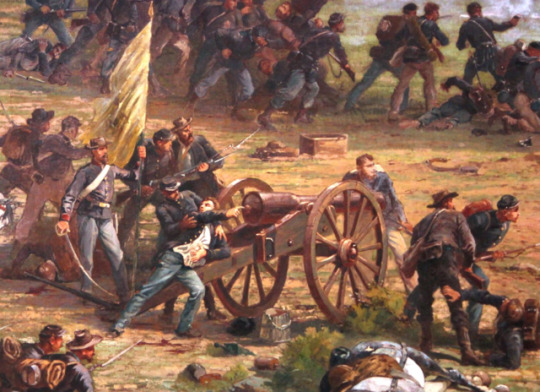
The Gettysburg Cyclorama, painted by French artist Paul Dominique Philippoteaux, in 1883, depicts Lt. Gen. James Longstreet's Assault on July 3, 1863. In this segment of the cyclorama, First Lieutenant Alonzo H Cushing is pictured in the center, leaning against the left side of the canon. (Photo courtesy of Gettysburg National Military Park Public Affairs).
#gettysburg#battle of gettysburg#Alonzo cushing#cushing#us army#usa#federal#federals#federal army#19th century#history#military history#civil war#American civil war
151 notes
·
View notes
Text

“Lions of Little Round Top, July 2nd 1863″
Late in the afternoon of July 2, 1863, on a boulder-strewn hillside in southern Pennsylvania, Union Colonel Joshua Lawrence Chamberlain dashed headlong into history, leading his 20th Maine Regiment in perhaps the most famous counterattack of the Civil War.
The regiment’s sudden, desperate bayonet charge blunted the Confederate assault on Little Round Top and has been credited with saving Major General George Gordon Meade’s Army of the Potomac, winning the Battle of Gettysburg and setting the South on a long, irreversible path to defeat.
(Painting by Don Troiani)
#gettysburg#battle of gettysburg#little round top#joshua chamberlain#2nd Maine#civil war#union army#confederate army#military#history#pennsylvania#art#painting#artwork
45 notes
·
View notes
Text
to be fair i was screaming too when i was watching it i wont even lie.
#gettysburg (1993)#Gettysburg 1993#joshua chamberlain#thomas chamberlain#jeff daniels#c thomas howell#is it obvious i just watched this movie#civil war#gettysburg#little round top#american civil war#us civil war#can you also tell i got lazy...#guessing game core#battle of gettysburg
4 notes
·
View notes
Text
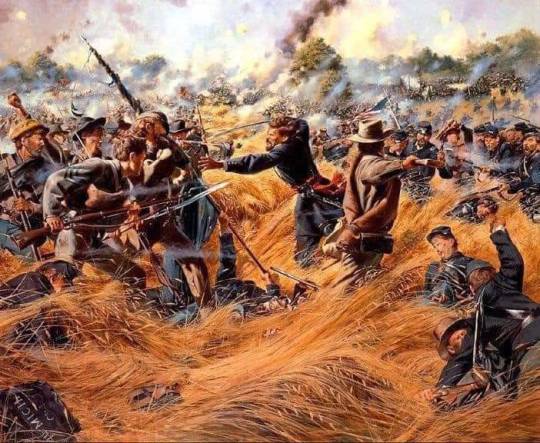
“his hat off, his eyes flashing with the light of battle, with sword drawn…”
Colonel Harrison Jeffords, commander of the 4th Michigan, tries to retrieve the flag he had “pledged himself in decisive terms to be its special defender and guardian.” He will lose his life in the attempt.
During the 2nd day at Gettysburg (2 July 1863) fighting in The Wheatfield, the 4th Michigan’s color-bearer dropped their colors — Jeffords rushed to retrieve them. He is said to have shot a Confederate soldier who had seized the flag and even grasped the banner himself. In the ensuing melee, Jeffords received a gunshot wound to the thigh and was bayonetted by a Confederate soldier in the left abdomen, mortally wounding the 26 year-old officer. Other soldiers of the 4th Michigan rushed to his aid and carried their fallen commander out of The Wheatfield — what happened to the flag is less certain, but it was probably lost, torn to shreds. As his life slowly drained away, his final words were said to be "Mother, mother, mother." He died at 4 AM the next day, 3 July 1863. Jeffords became the highest commissioned officer in the Civil War to die of a bayonet wound.
"Saving the Flag", by artist Don Troiani.
11 notes
·
View notes
Text
"THE LOVE LETTER" (1998) Review

"THE LOVE LETTER" (1998) Review
Twenty-seven years ago, CBS's "HALLMARK HALL OF FAME" anthology series aired a television movie titled "THE LOVE LETTER". This movie was an adaptation of Jack Finney's 1959 short story of the same title and has become a big favorite of many television viewers over the years.
"THE LOVE LETTER" begins when a computer games designer named Scott Corrigan and his fiancée Debra Zabriskie stumble across an old desk at an antiques store in a suburb outside of Boston, Massachusetts. Being a Civil War history buff as well, Scott buys the desk and later, discovers a letter written in 1863, hidden inside a secret compartment. The letter's writer is a woman in her late 20s named Elizabeth Whitcomb, who conveys her secret feelings and desires to no one in particular. Scott shows the letter to his mother, who believes he may actually be able to communicate with Elizabeth across time. Mrs. Corrigan encourages him to reply with his own letter. She also gives Scott a postage stamp from the mid 19th century, and suggests he mail it from a local post office that had been constructed back in 1857. After Scott follows his mother's suggestions, Elizabeth receives his letter from the local postman, setting in motion a line of communication and developing emotions between them that crosses the boundaries of time.
I might as well put my cards on the table. I am not into television movies from the "HALLMARK HALL OF FAME" series. In fact, I can only think of two or three productions that I found interesting. By the time I had come around to watching "THE LOVE LETTER", I did it for only two reasons - I love time travel stories and I am a Civil War buff. Despite having Cameron Scott and Jennifer Jason Leigh in the leads, I did not have any high hopes for this production. I also discovered that "THE LOVE LETTER" was not a faithful adaptation of Finney's short story. Instead of being set in and around both 1998 and 1863 Boston, Finney's story was set in and around 1959 and 1880s Brooklyn, New York. Whereas the Scott Corrigan character was engaged in the 1998 movie, the lead in Finney's story was a single man. Finney's tale also lacked a mother character for his leading man . . . whereas the 1998 television featured a mother character. The Elizabeth Whitcomb character was plagued by headaches and Finney's leading lady was not. In the 1998 movie, Elizabeth was an aspiring character. But the Elizabeth Worley character in the short story was not.
However, I never found it important for a movie or television series to be completely loyal to its source material, especially if the production in question managed to capture its true essence. Being just as good or even better also helps. I have never read Finney's short story, but I have read the synopsis. Personally, I believe the 1998 movie proved to be just as good as the former. Dare I say . . . perhaps slightly better? I believe the additions created by James S. Henderson's screenplay had added more oomph to Finney's tale. Changing the 19th century from 1880s Brooklyn to 1863 New England and making the leading man a Civil War buff really appealed to my sense of history. But what made this movie even more poignant for me was the addition of lookalikes for the two leads in the story. Scott eventually met Elizabeth's lookalike, a dog owner with whom he becomes acquainted in the movie's end; and Elizabeth met Scott's doppelgänger, Union Army officer Colonel Caleb Denby during the movie's second half. Is it any wonder that I was not surprised to learn Henderson had won the Writers Guild of America Award for Television: Long Form – Adapted.
But what made "THE LOVE LETTER" really worked for me was the developing romance between the two character via the exchange of letters. I also enjoyed how their letters affected their lives. Elizabeth's correspondence with Scott had encouraged her reconsider a marriage proposal from one of her father's neighbors - a man she did not love. Their correspondence also led Scott to reconsider his feelings for his fiancée, a very nice woman with whom he seemed to be going through the motions. After Scott's mother had pointed out that his correspondence with Elizabeth seemed equal to emotional cheating, the movie featured one well-done but painful scene in which Scott revealed the true nature of his obsession with the desk to his fiancée. "THE LOVE LETTER" featured other memorable scenes - Scott and Elizabeth sensing each other's presence on the staircase, inside the Whitcombs' house; Scott's biking accident; Elizabeth's romance with Caleb Denby; the old post office fire in 1998, Elizabeth's journey to Gettysburg, and the battle's aftermath; and Scott's first meeting with Elizabeth's doppelgänger. But the after effects of the protagonists' correspondence is what I remembered most about this television movie.
I certainly did not have a problem with the movie's production values, much to my surprise. Although the 1990s did feature some period television movies with decent production values, I never really considered them top notch. One had to turn to television miniseries for that. And although I found the production values for "THE LOVE LETTER" pretty decent, they did not exactly blow me away. I must admit that I found Dorothy Adams' costume designs very impressive. I was also impressed by Bill Blunden's editing, as he alternated the scene shifts between 1998 and 1863 with such ease. I was especially impressed by Blunden's handling of the sequence, which alternated between Scott's biking accident and Elizabeth's first meeting with Colonel Denby.
As much as I had enjoyed "THE LOVE LETTER", I did have a few issues with it. I had a minor issue with the hairstyle worn by actress Jennifer Jason Leigh. I had no problems with her costumes. But why on earth was her hair worn in such a loose and vague fashion . . . as if the movie's hairstylist tried to create some hybrid fusion between 1860s and 1990s hair styles? I really hate it when a production crew tries to infuse modern fashion, dialogue, music and yes, even hair styles in a period setting. But my main issue with the film focused on Scott's communication with Elizabeth. All the latter had to do was write a letter and shove it inside the desk's special compartment in 1863. As the desk's current owner, Scott was bound to discover it. But Scott's method of communicating with Elizabeth struck me as . . . well, contrived. Thanks to his mother's instructions, he had to use a 19th century U.S. stamp on his letters' envelopes and mail them through an old post office constructed in the mid-19th century. This method enabled his letters to magically transport back to Elizabeth in 1863. I realize that the movie's screenwriters had adapted this method of time traveling from the original short story. But why utilize such a contrived method in the first place? Scott was not a wealthy man. The movie made this clear when he found himself bargaining with an antiques store owner in order to purchase the desk. Nor was he a business owner. Scott was an employee at a video game design company. An unused 19th century stamp would have probably be worth a good deal of money, even in 1998. Considering the number of letters that Scott had sent to Elizabeth, I can only wonder how much money he had spent to purchase more 19th century stamps. Would it have been easier for the screenwriters (or even Jack Finney, who wrote the original short story) to allow the desk or its secret compartment to be some kind of magical entity that allowed objects - including letters - transport through time?
But there is one thing I had no complaints about was the movie's cast. "THE LOVE LETTER" featured some solid performances from the likes of David Dukes, Kali Rocha, Myra Carter, Laurie Kennedy and Richard Woods. But I must admit that I found myself especially impressed by supporting performances from Daphne Ashbrook, Estelle Parsons, Irma P. Hall and Gerrit Graham. But why beat around the bush here. The pair who really carried the film . . . who really made this story worked were the movie's leads, Campbell Scott and Jennifer Jason Leigh. I thought Scott (the actor) did an excellent job in conveying his character's penchant for hiding or suppressing his passion for history, along with his growing obsession toward and love for Elizabeth with subtle reactions and a dry wit. Scott also had the additional task of portraying Colonel Caleb Denby, the Union officer who managed to woo Elizabeth with a charismatic charm. Leigh had never received the opportunity to delve into the personality of Elizabeth's 1998 doppelgänger. But I thought she gave a superb performance as the more openly emotional Elizabeth, who reacted with surprise and joy at the idea of corresponding with a mystery man who understood her, and who found herself struggling with a loving family determined to keep her constrained within a social straight jacket.
Over the past two-and-half decades, "THE LOVE LETTER" has become something of a cult favorite among fans of science-fiction/fantasy and period drama. After my recent rewatch of this television drama, I can see why it has remained very popular. I thought director Dan Curtis and screenwriter James S. Henderson did an excellent job in adapting Jack Finney's short story. And their efforts were enhanced by the excellent performances from the cast led by Campbell Scott and Jennifer Jason-Leigh.

#the love letter#the love letter 1998#jack finney#dan curtis#james s. henderson#time travel#late 20th century#u.s. civil war#campbell scott#jennifer jason leigh#david dukes#estelle parsons#daphne ashbrook#myra carter#gerrit graham#irma p. hall#kali rocha#richard woods#laurie kennedy#battle of gettysburg#period drama#period dramas#costume drama
3 notes
·
View notes